Welcome To The
Biblical Botanical Gardens Society, USA & Global.
BBGS PRESS RELEASE : Latest book by Dr. Carolyn A. Roth now available!

Dr. Carolyn Adams Roth
Authoress, Biblical Garden Shepherdess,
BBGS Regional Director
Virginia
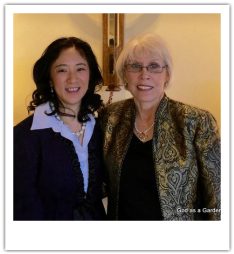
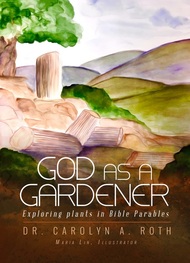
Left Photo: Maria Lin and Dr. Carolyn Roth.
Maria was the illustrator in Carolyn's latest release, God as a Gardener: Exploring Palnts in Bible Parables.
What is a Biblical Garden?
Biblical Gardens are gardens made up of plants mentioned in the Bible. These plants are the living link between us and the people of those hallowed and distant times. The humble onion and leek, the dill, mint and rue of our present day lives were also part of the everyday lives of the Bible people. Hundreds of plants are mentioned in the scriptures and most are still growing in modern times. This web site is dedicated to sharing ideas, garden plans, seeds, plants, botanical information, crafts, projects, recipes, bibliographies, lists of Biblical Gardens throughout the world, references, and photographs to help everyone learn more about the subject and plant their own version of a biblical garden. Through the magic of the internet we will visit and share Bible gardens here in the United States and throughout the world.
What is the Vision of the society?
A Bible garden in every church, synagogue, and home. The garden will serve as a living connection to ancient times and will include a variety of plants mentioned in the Bible.
What are the Mission Goals of the society?
To advocate the creation and stewardship of biblical botanical gardens throughout the United States; whether by individuals, places of worship, garden clubs or other interested enthusiasts.- To strengthen the Biblical gardens movement by providing seminars, symposiums, educational opportunities, and the results of biblical flora research to the membership.
- To present an annual Biblical Botanical Garden Fest, with lecturers, programs, displays, vendors, entertainment, auctions, and in short a wonderful two-day, family-friendly, and community-building experience.
- To demonstrate how scripture can be illuminated by an apprecation of its contextual background, which includes the flora and fauna of the lands of the Bible.
- To create and maintain the most comprehensive website on the subject of biblical gardens and the flora of the lands of the Bible.
How can the society help me?
Seed Spade n Sword our social connection network is the primary tool by which we can be of greatest assistance. Please click here for more help.
What will the society do for me?
- Our experts are ready to field your questions;
- Our scholars will try to solve the mysteries of plant names as they were translated from Hebrew and Greek and then to English;
- Our specialists in crafts will create interesting and useful projects using herbs and spices and other products from your gardens.
- Our Master gardeners are also prepared to answer horticultural questions e.g., soils, pest control, water/shade needs, and plant diseases.
- But please remember, this is an interactive site and your ideas and comments are necessary for us to meet your needs. If you have written an article, created a project for Sunday School or church please let us know and we will consider posting it.
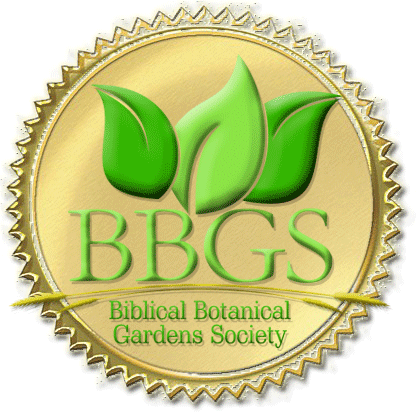
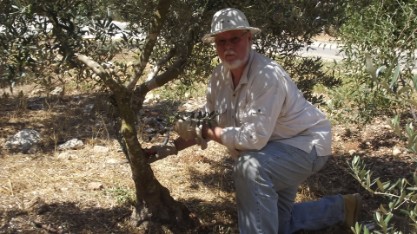
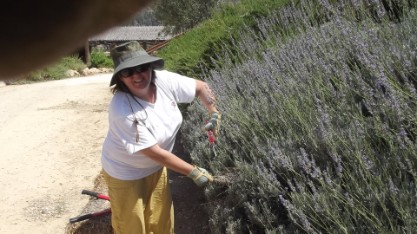
Dr Ed Bez ,Executive Director of BBGS, working with the Olive trees (Olea europaea L.) at Yad Hashmona, Israel in 2013. He studied six months the proper pruning and trenching techniques of a varirety of biblical trees.
Rachel Bez working in the herb terraces at Yad Hashmona; she studies the propogation and care of biblical herbs, including in this photo, Rosemary, Curry, and Lavender.
Gardener's Quotables
If you have a garden and a library you have everything you need.
Cicero, Roman Orator, Statesman, died 43 BC
In grasses, trees, and fruits, apart from their various uses, there is beauty of appearance and pleasantness of odor.... Has the Lord clothed the flowers with the great beauty that greets our eyes, the sweetness of smell that is wafted upon our nostrils, and yet will it be unlawful for our eyes to be affected by that beauty, or our sense of smell by the sweetness of that odor?... Did he not, in short, render many things attractive to us, apart from their necessary use?
John Calvin, Institutes
A garden teems with life. It glows with color and smells like heaven and puts orward at every hour of a summer day beauties which man could never have created and could not even, on his own resources, have imagined.
C.S. Lewis
Photographic Introduction to the Plants of the Bible ( See more in our Photo gallery)
Shasta Daisy
(Chrysanthemum coronarium L.)
The word, "daisy" was originally "day's eye." An early metaphorical reference to the sun, "day's eye" was later applied to the sun-like appearance of this flower, with its central yellow disk surrounded by "rays."
The name chrysanthemum means “golden flower” in Latin.
This plant is attractive to bees, butterflies and/or birds
1 Kings 6:29-Solomon decorated God's temple with open flowers...
Photo by Ed Bez taken near Capernaum, northeastern shores of the Sea of Galilee (2007)
Black Mustard (Brassica nigra)
Plant cultivated for its seeds, which are commonly used as a spice. They are flavorful, although they have almost no aroma.
It is theorized that black mustard is the seed mentioned by Jesus in Matthew 13:31-32. Also see Luke 13:19- The parable of the mustard seed.
Comments by Dr. Musselman , April 1-2, 2009- "...the plant you illustrate is not mustard. Well, yes it is a mustard in the sense that it is in the mustard family. Today I saw acres of the same plant here in eastern Iraq. They are beautiful."
References:
Post, George Edward (1900). "Mustard". in James Hastings. A Dictionary of the Bible.
http://en.wikipedia.org/wiki/Brassica_nigra
Photo by Ed Bez taken on the traditional site of the Mount of he Beatitudes. Northeastern Galilee (2008)
Olive trees (Olea europaea) in the Garden of Gethsemene, Jerusalem.
The olive is one of the plants most cited in recorded literature.
The olive tree and olives are mentioned over 30 times in the Bible, in both the New and Old Testaments. It is one of the first plants mentioned in the Bible, and one of the most significant. For example, it was an olive branch that a dove brought back to Noah to demonstrate that the flood was over. The Mount of Olives east of Jerusalem is mentioned several times. The olive tree itself, as well as olive oil and olives, play an important role in the Bible.
Several trees in the Garden of Gethsemane (from the Hebrew words "gat shemanim" or olive press) in
References: http://en.wikipedia.org/wiki/Olive
Photo by Ed Bez in the Garden of Gethsemene, Mt. of Olives (2008).
Aloe (Aloe vera) in bloom at Caesarea Maritima, coastal region of Israel.
Comment by Dr. Musselman, April 2, 2009- "And true aloes (genus Aloe) were most likely not used in Bible times in the Middle East. The problem stems from the translation of the word alaloth which almost certainly refers to the valuable extract of the Aquilaria tree".
Photo by Ed Bez taken at Caesarea Maritima, eastern Mediterranean (2008).